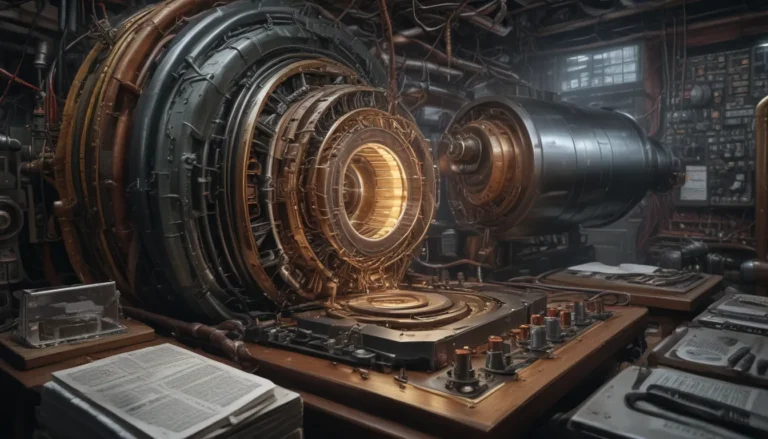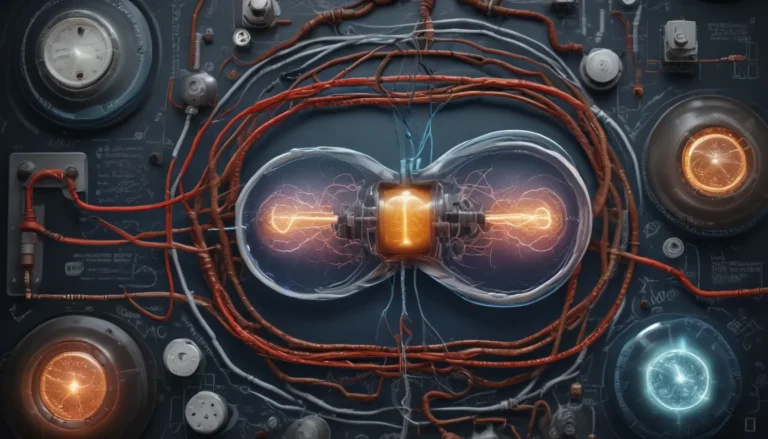A Note About Images: The images used in our articles are for illustration purposes only and may not exactly match the content. They are meant to engage readers, but the text should be relied upon for accurate information.
Motion is a fundamental concept that surrounds us in various forms, from the graceful movements of a dancer to the intricate mechanisms of a clock. In this article, we will delve into some captivating fun facts about motion, exploring its scientific principles, real-world applications, and intriguing historical anecdotes. Let’s embark on a journey through the world of motion and uncover the wonders it holds.
Understanding the Essence of Motion
At its core, motion refers to a change in an object’s position over time. This fundamental concept in physics encompasses various aspects such as speed, velocity, acceleration, and inertia. By exploring fun facts about motion, we can gain a deeper understanding of its intricacies and real-world implications.
Unveiling Newton’s Laws of Motion
Sir Isaac Newton’s groundbreaking laws of motion revolutionized our understanding of how objects move and laid the foundation for classical mechanics. Here’s a brief overview of Newton’s three laws:
Newton’s First Law of Motion
Also known as the law of inertia, this law states that an object at rest will remain at rest, and an object in motion will continue moving at a constant velocity unless acted upon by an external force.
Newton’s Second Law of Motion
This law describes the relationship between the force acting on an object, its mass, and its acceleration. It explains that acceleration is directly proportional to the net force applied and inversely proportional to mass.
Newton’s Third Law of Motion
According to this law, for every action, there is an equal and opposite reaction. When one object exerts a force on another, the second object exerts an equal and opposite force back.
The Astonishing Speed of Light
One of the most intriguing aspects of motion is the speed of light, which travels at an astonishing velocity of approximately 299,792 kilometers per second in a vacuum. This incredible speed has significant implications for fields such as astronomy, telecommunications, and particle physics.
Exploring the Marvel of Projectile Motion
Projectile motion refers to the curved trajectory followed by an object launched into the air and influenced solely by gravity. Examples include the path of a thrown ball, rocket flight, or graceful arcs of a fireworks display.
Delving into Conservation of Momentum
The principle of conservation of momentum states that in the absence of external forces, the total momentum of a system remains constant. This concept, vital in various fields like physics, engineering, and sports, reflects the product of an object’s mass and velocity.
Embracing Oscillatory Motion
Oscillatory motion involves the repetitive back-and-forth movement of an object around a stable equilibrium position. Examples include pendulum swings, guitar string vibrations, and metronome rhythm.
Motion in Transportation and Mobility
Motion is the driving force behind transportation systems, enabling quick and efficient travel via cars, trains, airplanes, and ships. Understanding the principles of motion and mechanics are vital in designing and operating these modes of transportation.
The Role of Motion in Sports and Athletics
Sports and athletics heavily rely on motion, with athletes harnessing body movements to achieve remarkable feats. From gymnastics routines to sprinter starts, mastering motion principles allows athletes to optimize performance in disciplines like soccer, basketball, and tennis.
Animation and Visual Effects: The Magic of Motion
Animation and visual effects leverage motion to bring characters and environments to life. By manipulating motion, animators create realistic movements and physics simulations that captivate audiences and enhance visual narratives.
Robotics and Automation: Harnessing Motion for Innovation
Motion plays a crucial role in robotics and automation, enabling machines to mimic human movements and perform complex tasks. Precise motion control systems in robotics like factory arms, autonomous vehicles, and humanoid robots enhance efficiency across various industries.
Motion in Medical Imaging: Ensuring Accuracy and Clarity
In the field of medical imaging, motion control systems are critical for capturing accurate images of the human body. Techniques such as CT scans, MRIs, and ultrasounds rely on motion tracking and correction algorithms to compensate for patient movement, ensuring clear and precise diagnostic images.
Conclusion: Embracing the Wonder of Motion
Motion is a captivating phenomenon that shapes our understanding of the physical world, from fundamental principles to diverse applications in science, technology, and creativity. By appreciating the essence of motion, we can better comprehend the universe’s intricacies, drive innovation, and inspire wonder in all aspects of life.
Frequently Asked Questions (FAQs)
What are Newton’s laws of motion?
Newton’s laws of motion consist of three fundamental principles that describe how objects move, including the law of inertia, the relationship between force, mass, and acceleration, and the principle of action and reaction.
What is projectile motion?
Projectile motion refers to the curved trajectory followed by an object launched into the air and influenced by gravity, characterized by initial horizontal velocity and constant vertical acceleration due to gravity.
How is motion used in sports?
Motion in sports involves athletes utilizing body movements, techniques, agility, coordination, and force application to excel in various disciplines and achieve optimal performance.
How does motion impact animation and visual effects?
Motion is essential in animation and visual effects, bringing characters and environments to life through realistic movements and physics simulations created by animators and visual effects artists.
How does motion contribute to medical imaging?
Motion control systems in medical imaging compensate for patient movement to capture accurate and clear images during procedures like CT scans, MRIs, and ultrasounds, ensuring the precision of diagnostic tools.
Embrace the Magic of Motion
Motion surrounds us in various forms, shaping our world and driving innovation across diverse fields. By understanding the principles of motion, we can explore the wonders it holds and appreciate its role in shaping our universe. Let’s dive into the captivating realm of motion and embrace its magic in every aspect of life.






